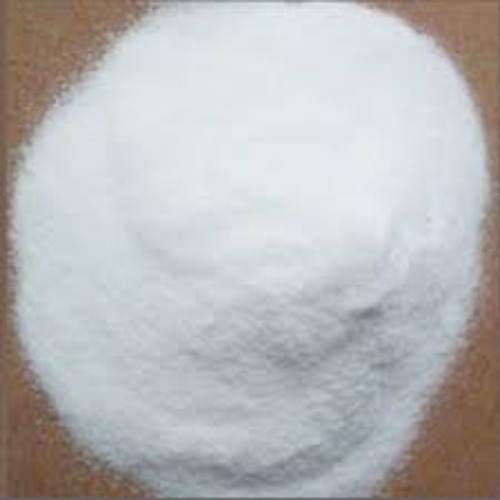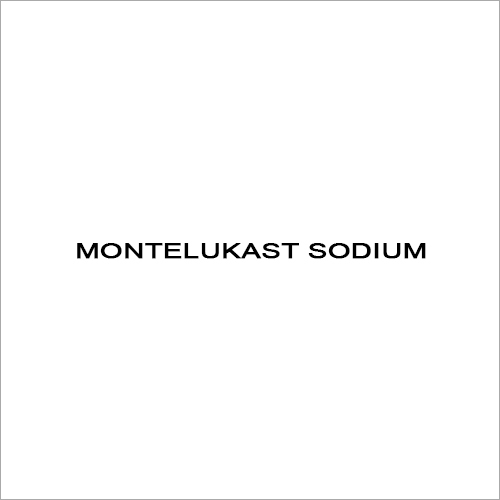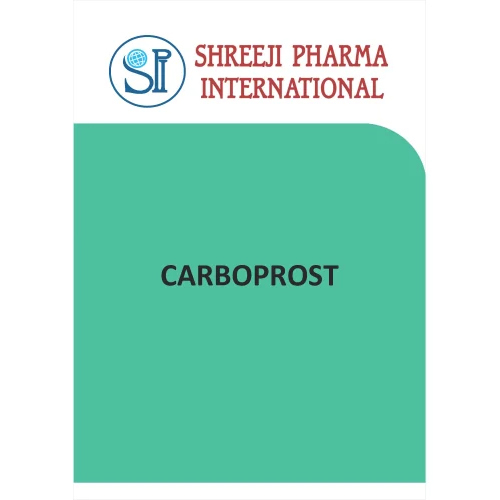Voriconazole .
Product Details:
- Boiling point Decomposes before boiling
- HS Code 29420090
- Loss on Drying 0.5%
- Solubility Slightly soluble in water; soluble in methanol, acetone, and ethanol
- Molecular Formula C H F N O
- Melting Point 127 C
- Molecular Weight 349.31 Grams (g)
- Click to View more
Voriconazole . Price And Quantity
- 5300.0 INR/Kilograms
- 25 Kilograms
Voriconazole . Product Specifications
- 29420090
- Decomposes before boiling
- Powder
- No Smell
- D90 100 150 m
- White to off-white crystalline powder
- Pharmaceutical Intermediates
- Slightly soluble in water; soluble in methanol, acetone, and ethanol
- 0.5%
- Room Temperature
- 10 ppm
- C H F N O
- 6.0 7.5
- 349.31 Grams (g)
- 137234-62-9
- Odorless
- Voriconazole
- Medicine Grade
- 127 C
- 606-168-4
Voriconazole . Trade Information
- mumbai
- Cash Advance (CA), Cash in Advance (CID)
- 1000 Kilograms Per Day
- 7 Days
- No
- Free samples are available
- DRUM
- Asia, Australia, Central America, North America, South America, Eastern Europe, Western Europe, Middle East, Africa
- WE PROVIDES ALL KIND OF CERTIFICATIONS AS YOU REQUIRED
Product Description
We are offering high quality of Voriconazole. We are known for manufacturing, exporting, distributing, trading and supplying Voriconazole in in Gujarat, India. Further, this is safely packaged by our professionals in diverse packaging options that maintain its purity and effectiveness.
Shreeji Pharma International is leading Manufacturer, Exporter, Distributor, and Supplier Voriconazole in Gujarat. India. Shreeji Pharma International manufacturing & gmp; supplying all products under GMP site with all types of regulatory supports.
Shreeji Pharma International is the largest manufacturer, Exporter and supplier of Voriconazole. Nowadays Shreeji Pharma International is one of the leading manufacturer and exporter, who is manufacturing Voriconazole as well as Intermediates of Voriconazole.
Shreeji Pharma International is exporter, supplier, distributor and manufacturers of the Active Pharmaceuticals Ingredients in many countries for many years.
Shreeji Pharma International currently export Voriconazole to countries like Gulf Countries, South East Asia countries, African Countries, CIS Countries, LATAM countries, Central American Countries and in European countries.
Voriconazole is an antifungal medication used to treat serious and life-threatening fungal infections. It belongs to the triazole class of antifungal agents and is known for its broad-spectrum activity against a variety of fungal pathogens. Voriconazole is typically used when infections are resistant to other antifungal treatments or when infections are severe.
General Information:
Chemical Name: (2R,3S)-2-(2,4-difluorophenyl)-5-fluoro-4-(1H-1,2,4-triazol-1-yl)pyrimidine.
Molecular Formula: C16H14F3N5.
CAS Number: 137234-62-9.
Brand Names: Vfend, among others.
Drug Class: Triazole antifungal.
Mechanism of Action:
Voriconazole works by inhibiting 14-demethylase, an enzyme in the fungal cell membrane that is responsible for converting lanosterol into ergosterol, a crucial component of the fungal cell membrane. Without ergosterol, the fungal cell membrane is compromised, leading to fungal cell death. This mechanism allows voriconazole to target and disrupt the growth of a wide variety of fungi, including yeasts and molds.
Indications:
Voriconazole is used to treat infections caused by fungi such as:
Invasive Aspergillosis A severe infection caused by the Aspergillus species, especially in immunocompromised patients.
Invasive Candidiasis An infection due to Candida species, including Candida albicans.
Cryptococcosis An infection caused by Cryptococcus neoformans, which can affect the brain, lungs, and other organs, especially in immunocompromised individuals like those with HIV/AIDS.
Fusariosis A fungal infection caused by Fusarium species.
Scedosporium and Penicillium Infections Rare but potentially serious fungal infections treated with voriconazole.
Dosage and Administration:
Oral Tablets:
Initial dose for adults: 200 mg every 12 hours for the first 24 hours.
After 24 hours, maintenance dose: 200 mg to 300 mg every 12 hours, depending on the infection type and severity.
Oral Suspension:
Children and adults with varying doses based on weight and specific infection.
Intravenous (IV) Administration:
Initial dose: 6 mg/kg every 12 hours for the first 24 hours.
After 24 hours, maintenance dose: 4 mg/kg every 12 hours.
The IV form is typically transitioned to oral therapy when possible, depending on the patient's condition and response to treatment.
Renal and Hepatic Impairment:
In patients with liver disease, dosing adjustments are required as voriconazole is metabolized by the liver. Liver function should be closely monitored.
In cases of severe renal impairment, the dose may need to be adjusted.
Side Effects:
While voriconazole is effective, it can cause side effects. Some common and serious side effects include:
Common Side Effects:
Visual disturbances: These include blurred vision, color vision changes, and temporary visual impairment, especially during the first few days of treatment. These effects usually resolve after a few days.
Headache.
Nausea and vomiting.
Rash.
Fever.
Diarrhea.
Abdominal pain.
Serious Side Effects:
Liver toxicity: Elevated liver enzymes or more severe liver damage, especially in those with pre-existing liver conditions.
QT prolongation: Voriconazole can prolong the QT interval on an electrocardiogram (ECG), which increases the risk of arrhythmias like torsades de pointes.
Hallucinations and neuropsychiatric effects: Some patients may experience confusion, vivid dreams, or hallucinations.
Severe skin reactions: Rarely, voriconazole can cause severe skin conditions such as Stevens-Johnson syndrome or toxic epidermal necrolysis.
Kidney issues: Rare renal toxicity can occur, and kidney function should be monitored.
Precautions:
Liver Function:
Patients with liver disease need careful monitoring as voriconazole can cause liver toxicity. Dose adjustments are necessary for those with mild to moderate hepatic impairment.
Heart Disease:
Due to the risk of QT interval prolongation, voriconazole should be used with caution in patients with heart disease or those taking other medications that may also prolong the QT interval.
Visual Effects:
As visual disturbances are common during treatment, patients should be cautioned about engaging in activities requiring clear vision, such as driving.
Drug Interactions:
Voriconazole is metabolized by CYP450 enzymes, especially CYP2C19, CYP2C9, and CYP3A4. This means that it can interact with many other drugs metabolized by the same enzymes, such as phenytoin, warfarin, benzodiazepines, cyclosporine, and certain statins. Caution should be exercised, and dose adjustments may be required.
Pregnancy and Breastfeeding:
Pregnancy: Voriconazole is Category D, indicating that it may cause harm to a developing fetus. It should only be used in pregnancy if the potential benefits justify the risks.
Breastfeeding: Voriconazole passes into breast milk, and its use during breastfeeding is not recommended unless the potential benefits outweigh the risks.
Children:
Dosage for pediatric patients is weight-based, and children may experience different side effects compared to adults. Careful monitoring is necessary.
Storage:
Oral Tablets/Suspension: Store at room temperature, away from moisture and light.
Intravenous Solution: Store at room temperature and protect from light.
Drug Interactions:
Voriconazole has several significant interactions due to its effect on the CYP450 enzyme system. Important drug interactions include:
Increased levels of other medications (e.g., cyclosporine, tacrolimus, phenytoin) due to reduced metabolism.
Reduced effectiveness of voriconazole when taken with strong CYP450 inducers like rifampin, carbamazepine, or phenytoin.
Increased risk of bleeding when combined with warfarin, requiring close monitoring of INR levels.
Conclusion:
Voriconazole is a powerful antifungal agent effective against a wide range of serious fungal infections. It is typically used for treating invasive infections like aspergillosis, candidiasis, cryptococcosis, and others, particularly in immunocompromised patients. While it is generally well-tolerated, it can have significant side effects, including liver toxicity, visual disturbances, and heart issues, especially QT prolongation. Careful monitoring of liver function, renal function, and drug interactions is essential for safe use. Pregnant and breastfeeding women should avoid the medication unless absolutely necessary. As with all potent medications, proper administration and monitoring are crucial for the best outcome
Price:
- 50
- 100
- 200
- 250
- 500
- 1000+









 : nilesh.sheth70
: nilesh.sheth70
